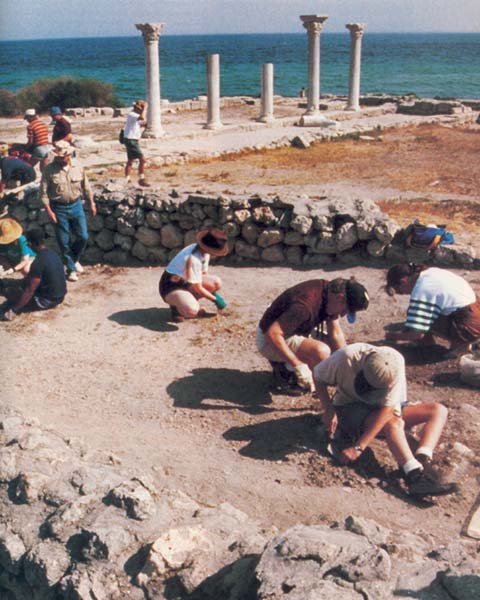Image Details

Robert S. MacLennan/Black Sea Project
What led the excavators to this basilica? In museums in Kerch and Chersonesus, they found numerous references to well-established, ancient Jewish communities in the Crimea. Several manumission documents from the first century C.E., for example, state that the freedom of a newly released slave will be guaranteed by tes sunagoges ton Ioudaion—the synagogue, or community, of the Jews.
A Jewish building—what we mean today by the word “synagogue”—may once have occupied the site on which the basilica was later built. The evidence for this ancient synagogue includes a menorah depiction, found in secondary use in the basilica, and a plaster fragment containing the word “Jerusalem.” Both the menorah and the inscription date to between the second and fourth century C.E., centuries before the Byzantine basilica was built.
